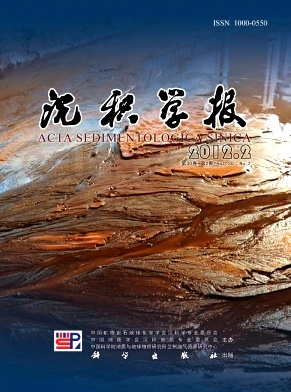Geochemical Characteristics of Loess Deposition since Last Interglacial at Desert Margin and Its Provenance and Climatic Implications
- Publish Date: 2012-04-10
-
Key words:
- desert margin
Abstract: The loess deposition at desert margin holds a good archive of climatic change as such area is sensitive to variations of Asian Monsoon. However, due to the complexity of magnetic enhancement mechanism in loess at desert margin, magnetic susceptibility is not suitable for summer monsoon reconstruction. In this paper, we investigated the geochemical characteristics of loess deposition since last interglacial at desert margin and try to screen good geochemical indicators of weathering and sorting of loess deposition at desert margin. In doing so, we investigated a loess site at Baiya which is located 50 km south to Tengger Desert. The Baiya loess section in this study consists of S0, L1 and S1, corresponding to the Holocene, the last glacial, and the last interglacial respectively. 730 samples were collected from this section. All of them were subjected to magnetic measurement using Bartington MS2B and grain size analysis using Malvern Mastersizer 2000. 183 samples were subjected to chemical elements determination using Xray fluorescence (XRF) analysis on Panalytical Magix PW2403 spectroscope. All the lab works were carried out at the Key Laboratory of Western China's Environmental Systems (Ministry of Education), Lanzhou University. The geochemical results from the whole section show that the content of SiO2, Al2O3 is close to that of UCC, the content of CaO, MgO, TiO2, Fe2O3 was enriched relative to that of UCC; the content of Na2O, K2O was depleted relative to that of UCC. As the chemical weathering strengthened, the striking phenomenon of elements behavior of this section is the depletion of sodium and the enrichment of iron and magnesium. However, the behavior of calcium was equivocal, which is probably caused by weak leaching in deposition area and strong evaporatinginduced ascending of Ca in source area. Generally, the chemical weathering in the study area is weak and on its initial weathering stage as expressed by the low chemical index of alteration (CIA) which spanned from 50 to 60. Four frequentlyused geochemical indicators were tested in current study, e.g., CIA, the ratio of Rb to Sr (Rb/Sr), the molar ratio of SiO2 to TiO2 (SiO2/TiO2), and the ratio of Zr to Rb (Zr/Rb). CIA is sensitive to reflect the weathering and the pedogenesis, and thus can be used as a proxy of Asian Summer Monsoon strength. The Rb/Sr is a good indicator of chemical weathering when it was applied in the main body of the Chinese loess Plateau. However, it didn't work well at Baiya section. We assumed that the problem is mainly caused by the behavior of Sr. That is, under warmer and wetter climate, more Sr was washed into source area, strong evaporation induced ascending of Sr to surface soil with the capillary force, leading to the decrease of Rb/Sr. When such source material was transported to the deposition area, the postdepositional Rb/Sr didn't increase significantly because of relatively weaker leaching at desert margin. In short, the ultimate Rb/Sr at Baiya section contained both weathering signal and source material signal, and it was not suitable for reconstructing summer monsoon variations. The other two geochemical indicators, SiO2/TiO2 and Zr/Rb closely follow the variation of grain sizes, and they are positively correlated to the median grain size (the coefficient r is 0.907, 0.824, respectively), thus, they can be used as indicators of winter monsoon intensity. In addition, SiO2/TiO2 and Zr/Rb are negatively correlated to CIA (the coefficient r is 0.657, 0.575 respectively), suggesting summer monsoon is also an important factor affecting the grain size variation through modulating the expansion and contracti on of desert. In current study, we also aimed to examine the provenance of loess material at different climatic stages. Al, Ti, Zr is the most stable element during chemical weathering. Their individual content might change in response to the chemical weathering; however, the ratios of AlTiZr can be inherited from the source area as they are very stable. We thus used the ternary diagram of 15Al2O3, Zr, and 300TiO2 to trace the potential change of provenance (source material and/or source region). The AlTiZr ternary diagrams showed that loess deposition during the the Holocene and the Last Interglacial period (So and S1) was well mixed while the loess deposition during the Last Glacial (L1) was not homogeneously mixed. We suggested that the dust has experienced long distance transport and more thorough mixing processes during interglacial period while the source material didn't undergo thorough mixing processes during glacial period as the source was probably getting closer.
| Citation: | Geochemical Characteristics of Loess Deposition since Last Interglacial at Desert Margin and Its Provenance and Climatic Implications[J]. Acta Sedimentologica Sinica, 2012, 30(2): 356-365. |






 DownLoad:
DownLoad: